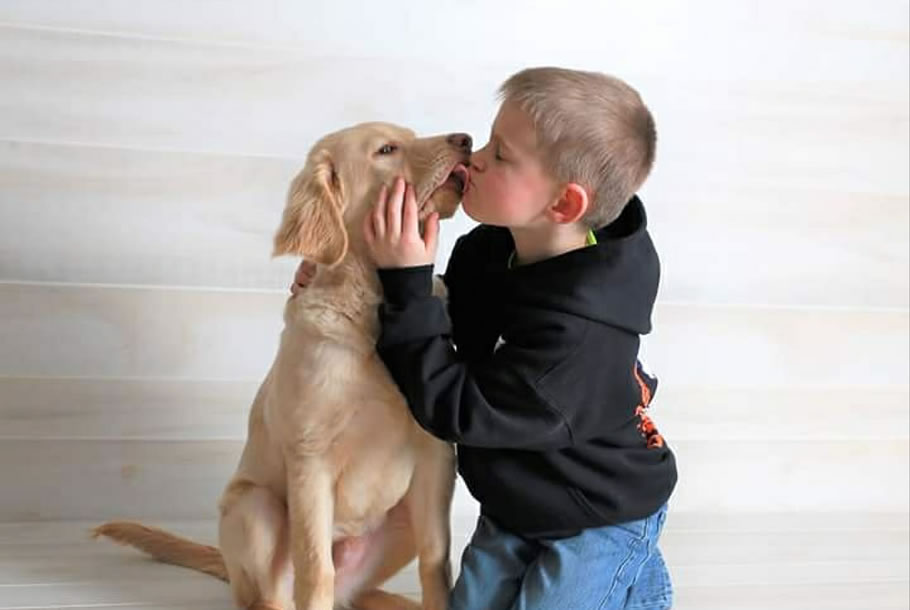
A young pup has an attention span of like, a nanosecond. Keep these lessons very brief to start.
You can teach these skills in your kitchen, living room or garage which makes it even more convenient and you can spend a few minutes with this several times a day regardless of weather. Start in a room that he is comfortable in which will help him stay under control. At first, do not have anyone else around. Eventually move outside, then to other surroundings without distractions; and later add distractions.
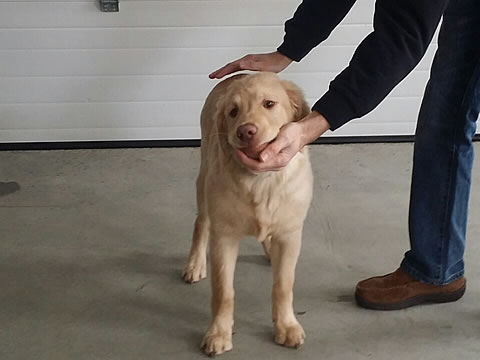
For sit, have him standing tall, put one hand under his muzzle, gently push his butt down with the other hand and repeatedly say ‘sit.’ He may try to reject your hand under his muzzle but this is important because it maintains good posture. The first few times you do this, and just for a second or two, keep holding your hands there and repeat ‘sit.’ This will help make him realize he has to come to a complete stop when his butt hits the floor.
Praise him lightly when he sits even though he is not doing it on his own (you are pushing his butt down.) Just don’t praise him so much that he starts jumping around. He’ll get this fairly quickly, but always be patient. Do not start asking him to stay until he has a good grasp of sit.
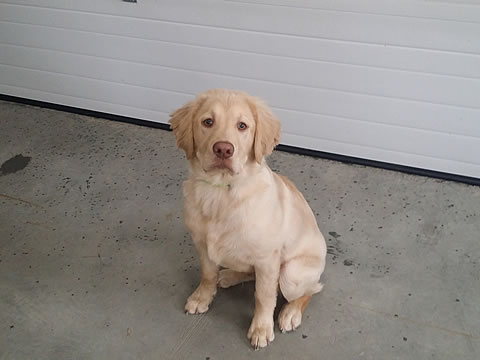
When he understands that sit means sit, command him to stay. Us his name – “Dozer, stay” – but softly in a calming tone. Stroke his head gently to help relax him. Eventually move away lengthening the distance between you and him – all the while keep saying ‘stay’ – and always look straight at him. If he breaks at any point during stay, go back to the beginning with sit and keep this as a sequence drill.
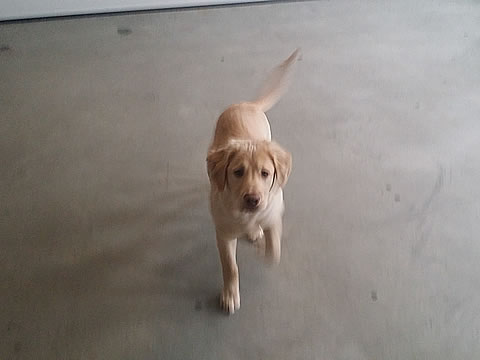
Once he stays regularly and for five seconds max, tell him to come. Just use one word, ‘come,’ – or ‘here’ if that’s your preference – but not a sentence. Get him excited about coming to you and praise him when he comes. Verbal praise and patting – not treats. Keep the distance short so he comes straight and direct to you. If he messes up, go back to sit and start the entire sequence over. Eventually lengthen the distance he comes to you. When you do lengthen the distance and if he gets distracted, run away from him (backwards but straight facing the dog) excitedly repeating the come command. He will follow (come) to you. A young pup will get energized by that so make sure you calm him down before you go through the sequence again.
Once he performs the sequence consistently, and in various locations, I strongly suggest you introduce the comeback whistle using just your mouth for the ‘come’ command only. Keep it soft (that’s why using your mouth is good) and don’t scare him with a loud whistle. Just don’t get too far ahead of yourself with whistle commands. This will make it so much easier when you start the come back whistle in earnest.
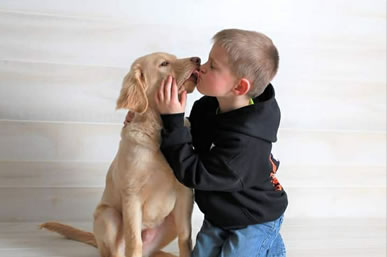
For Dozer, this handsome male pup from ‘way up’ in New York, a kiss from big brother at the end of the lesson is a tasty reward for a job well done!
Other thoughts:
Sit, stay, come are his first obedience lessons. Not obedience with severe reprimand, but obedience to make him begin to learn and to make him realize that you are the boss. Eventually use a firm hand and strong voice when necessary – just don’t scare him and never hit him. A little at a time, goes a long way. Do it daily, but stop a lesson when he becomes bored.
As an aside, I do not recommend training with treats to teach sit, stay, come. Or, anything for that matter!
All commands, now and forever, should be given with as few words as possible. Many trainers like to say the dog’s name prior to a verbal command. “Dozer, sit.” “Dozer, stay.” And eventually, “Dozer, fetch – Dozer, back.” I typically only use the dog’s name when he doesn’t take the come/here command quickly and I want to emphasize that ,”Hey, I’m talking to you!”
Teach sit, stay, come like everything else you will teach him depends on it!